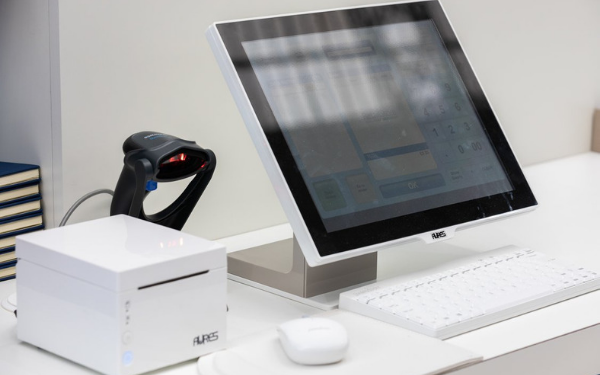By Caitlin GUILFOYLE, AURES UK Account Manager
Queuing frustrates the best of us. We’ve all been there – you find yourself in a big long queue in a shop or a bar, you wonder what the hold-up is, and then realise there’s only one till open. It’s the kind of experience that can put people off returning to any kind of establishment.
For business owners, planning your point of sale resources is an essential part of mapping out your customer journey. You focus your marketing on making sure people know your business exists and drawing them in. You use the layout of your premises to make the visit as engaging as possible through easy-to-navigate merchandising and/or by creating an appealing environment.
At the end of the journey, you also want to make sales processing as smooth and seamless as possible. Simply put, queues can ruin your conversion rates. And that is why it is essential to have sufficient POS resources to cope with the number of customers you have passing through your doors.
Traditionally, the POS-to-footfall ratio has presented business operators with a couple of choices. Ideally, you would calculate what you believe is your peak sales volume at your very busiest periods and install enough tills to cope with this level of footfall at a reasonable rate of flow. The problem then is that most of the time, when customer numbers do not hit the peak, you have spare POS capacity – you are, in other words, paying for resources you aren’t using.
The alternative is to take an average figure for footfall and invest in enough POS endpoints to serve this figure. On the plus side, you spend less and don’t often face wasted capacity. But at your busiest periods, you run the risk of long queues and disgruntled customers. Putting a lid on your POS costs may come at the expense of the customer experience.
A new blend
These kinds of calculations, however, are based on the assumption that sales points rely solely on the kind of fixed, staffed tills or terminals we typically associate with POS. But technology has evolved considerably in the past few years and EPOS solutions are now much more flexible than they once were. That in turn has an impact on how you can plan your resources to meet differing capacity requirements.
For example, as well as fixed point EPOS terminals, businesses now have the option of Mobile POS (M-POS) tablets which can be used to take sales and service to the customer, redefining what we mean by ‘point of sale’ entirely. Then there are self-service kiosks, used across an increasing range of retail and hospitality sub-sectors to minimise queues at checkout by reducing the burden on staff to be present to process sales.
The question “how many EPOS terminals do I need?” has therefore become more a question of “what blend of EPOS solutions do I need?” For most businesses, the familiar all-in-one terminal will still be the core. But rather than worrying over the dilemmas posed by over- versus under-resourcing in the number of terminals you choose, nowadays you can find a better balance between cost and service provision by adding different types of technology.
In a typical high street shop or restaurant, for example, you would still usually want to invest in enough fixed EPOS terminals to cope with a baseline of sales traffic – maybe just one or two tills for a moderately sized business. But this could be supplemented with M-POS tablets which could be deployed as and when required to cope with busy periods, as well as providing a flexible resource for staff around the store as they talk to and serve customers.
In larger stores and in restaurants looking to focus on quick service, kiosks provide a different option. In supermarkets and other large retail outlets, for example, self-service gives customers the choice whether to join the queue for a staffed checkout or do it themselves. The fact that some people will opt for self-service reduces the burden on staff and therefore speeds up sales processing overall. Similarly, in hospitality settings, the more you can hand power over to the customer – whether it is choosing a table or ordering and paying for food and drinks as they enter – the smoother the sales and service process tends to run, reducing wait times and therefore increasing customer satisfaction.




